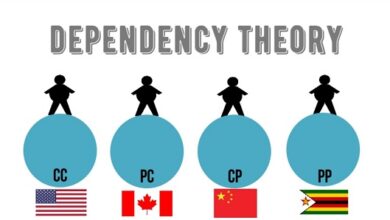Advantages of virtual learning environment/features/Importance
What Is The Virtual Learning Environment (VLE) And What Is It For?
Virtual Learning Environment is a platform that assists in offering distance courses and disciplines , providing interactions between its participants. In this article we will provide you the advantages of virtual learning environment.
The VLE also serves as a facilitator for the learning process, aggregating formats and contents different from those covered in traditional classrooms.
As defined by the Ministry of Education , AVAs are:
“Programs that allow the storage, administration and availability of content in Web format.”
Key examples of services provided by these tools include:
- virtual classes
- simulators
- forums
- chat rooms
- interactive activities
- Virtual tasks (webquest)
- modelers
- animations
- Collaborative texts (wiki).
In this article about the system, authors Janae Gonçalves Martins and Bernadette Beber Campestrini note that:
“In the possibility of the construction of knowledge by the student through the design of learning environments, the constructivist nature of learning stands out: individuals are active subjects in the construction of their own knowledge.”
Hence the importance of creating more than means of communication between educational institutions, educators and students who study remotely.
To contemplate this learning interface, it is necessary to have a platform capable of integrating knowledge and actions , offering a complete experience to the student – even if outside the classroom .
This is the role that VLE has assumed in today’s online teaching.
How Did The Virtual Learning Environment Come About?
As we explained at the beginning of the text, the Virtual Learning Environment was built in response to the demand for greater interaction and student participation in the learning process, in the context of Distance Education ( EAD ).
However, new technologies took time to be used in the area.
It was only in the 1970s that tele -education promoted some changes, showing the potential of satellite classes.
Radio, TV, local network and storage media (VHS, floppy disk, CD-ROM) were also used to enable remote teaching.
Two decades later, a new information and communication technology (ICT) promised to become a great ally of distance learning: the internet.
Accessed through personal computers, the network added convenience and the opportunity to reach people in their own homes, gaining the attention of Higher Education Institutions ( IES ).
“Contribute to the development of the concept, methods and techniques that promote flexible open and distance education.”
In the following year, the Law of Directives and Bases for National Education was enacted ( Law No. 9,394/96 ), an instrument that established, in the country, EAD for all levels and modalities of education.
In its article 80, the LDB states that the Public Power will encourage the development and broadcasting of distance learning programs, and that EAD can only be offered by institutions accredited by the Union .
However, the regulation of Distance Education only took place in 2005, with the publication of Decree No. 5,622 , of December 19, which was replaced by Decree No.
“Distance education is considered the educational modality in which the didactic-pedagogical mediation in the teaching and learning processes occurs with the use of information and communication means and technologies, with qualified personnel, with access policies, with compatible monitoring and evaluation. , among others, and develop educational activities for students and education professionals who are in different places and times.”
The Importance Of VLE For Distance Education (DE)
Although it became relevant in the 1990s, distance learning was still seen as an inferior teaching format until the beginning of the 21st century, especially due to its limitation in terms of the exchange of experiences .
After all, the social experience provided by the conventional classroom also contributes to the construction of knowledge, as well as the availability to ask questions with an educator in an agile way.
In order to break with this barrier to the growth of distance learning , organizations have started to develop spaces that bring together students, classmates (if any) and tutor teachers.
That’s how the Virtual Learning Environment was born, a customized platform to meet all the needs of the student and the educational institution.
Based on functionalities such as forums, chat rooms, tasks and announcements, the VLE created a format that makes better use of the resources offered by the internet , creating spaces for exchange to enrich the learning process .
Can The VLE Be Used Only In Distance Courses?
We saw above that the VLE is essential to qualify courses taught remotely.
This is its main function, but it is not the only one.
The Virtual Learning Environment also serves to improve the experience in blended learning – one that mixes face-to-face and distance classes.
In addition, AVA platforms support the improvement of fully face-to-face course services, complementing content, exercises and facilitating the delivery and organization of tasks .
Imagine, for example, a training or discipline in which students have classes in person, only on Tuesdays.
Due to the limited number of meetings , they may have shorter periods to present a report or work, but if they have an AVA, the time can be extended with the help of online delivery, via the system.
There, the teacher can also include complementary materials , such as readings, eliminating the need to copy this information during classes or print the contents.
Another interesting option is to publish announcements, lesson plans, calendars, corrections and even grades via VLE, allowing students to better organize their schedule to make the most of the course.
What Are The Features Of The Virtual Learning Environment?
Depending on the system and the needs, the VLE can contain a series of tools, meeting the interests of students, tutors and educational institutions.
In general, the platforms bring together activities carried out in the secretariat, classroom and tasks done at home .
Below, we discuss the most common features.
Support For Online, Blended And Virtual Activities
Quiz, multiple choice or essay questions can be answered online, with a set time to test students’ knowledge .
In addition, differentiated content is delivered through the AVA, which keeps it saved to facilitate later consultations.
In this way, students can learn in an interactive way , using strategies that move away from the traditional format of explanation, text, copy and tasks to more attractive or even playful options .
Videos, interactive graphics such as infographics, animations, audios or podcasts and games ( gamification ) serve to enhance learning and provide memorable experiences.
Calendars
Who has never felt confused about the beginning or end of classes, test dates and assignments?
It was with this demand in mind that developers added customizable calendars to the AVA, which appear complete and updated, gathering all the important dates .
They can even be downloaded, saved in their personal calendars on the most diverse email platforms such as Google or Outlook, on their smartphones and shared with colleagues to remember about the final assessments , for example.
Access To The Curriculum
Another useful file that is frequently consulted by the class is the curriculum of the courses, together with their program of classes .
All these documents are available, in updated versions, in modern virtual learning environments.
Thus, they eliminate doubts about the conduct of the meetings, whether they are face-to- face or virtual , live or recorded – allowing you to choose the best time to attend.
It may also include questions on more relevant topics.
Online Payment And Access To Monthly Fees
Several files that are part of the financial history are provided in the AVA. Some are saved and others can be requested in a simple way.
In the case of monthly fees, they are available for opening, printing and online payment, facilitating the dynamics of paying overdue amounts by showing updated numbers.
Tuition fees , services, purchase of specific materials and any other type of payment may be available at the AVA.
Discussion Forum
It is the space dedicated to the exchange of information, exposure of topics of interest and debates between students and teachers .
Normally, the online discussion forum is separated by topics, starting with a question and followed by the answers of one or more participants.
In addition to broadening horizons on a subject, forums can help to assess student participation, and can be answered synchronously or asynchronously.
Those made synchronously require immediate comments, that is, they are equivalent to a live debate, but mediated by technology .
Those organized in asynchronous format are open for a period for participants to respond according to their availability.
They dispense with immediate responses, allowing for the construction of more elaborate comments and reflections.
FAQ And Tutor Assistance
If the idea is to bring together the people involved in the teaching-learning process , the VLE could not leave chats, emails and other places of interaction aside.
Whenever necessary, the student can call a tutor to clarify doubts about the course or the use of the platform, or contact a teacher directly through personal email.
To facilitate the resolution of the most common questions, there are VLEs that contain FAQ pages, gathering frequently asked questions and guidelines.
Access To Newsletters
Registration information about enrollment, enrollment and bulletins are more examples of documentation saved in the Virtual Learning Environment.
This functionality replaces the queues and the need to print receipts and reports, presenting student data in an agile way, in one place.
Miscellaneous Requests (Requirements)
Diplomas, certificates, manuals, academic records and orders from various departments of educational institutions can be requested in just a few clicks, without the student having to leave home.
In addition, the AVA makes it possible to monitor the status of these materials, which is especially useful for those who wish to request a printed document – for example, the graduation diploma.
Instead of calling the secretary, just access the platform and check if it is ready or if it takes a few days to be removed.
What Are The Advantages Of The Virtual Learning Environment?
Now read some of the advantages of virtual learning environment.
1-Flexible Study Hours
While you can broadcast live classes or apply time-bound exercises, the virtual learning environment is characterized by flexibility.
Unlike the traditional system, which limits classes, assessments and conversations to face-to-face meetings, the platform gives students autonomy to organize their schedules , studying when it is most convenient.
If your course is not offered to other colleagues at the same time, it is possible to complete the activities in weeks or even months, as long as it is proven that the student has acquired the necessary knowledge to advance.
2-Personalization Of Learning
Thanks to the flexibility, the student himself can customize the time for studies, location, materials that he will read, listen to or watch.
That’s why we say that AVA helps to build a positive experience , adapted according to what users like and feel most comfortable with.
3-Content Review
You know that period dedicated to copying and organizing the notebook , handout or binder?
With the VLE, it can be moved to review the content, as the files are all organized and available, at least, for the duration of the module studied.
In general, lessons and reference materials are saved longer, so that the student can easily review them and answer questions.
4-Fast Communication Between Students And Teachers
Chats and other resources allow instant conversations , favoring quick communication.
It means that, even at a distance, it is not necessary to wait hours or days to get feedback on questions related to the content, course format or the functioning of the VLE.
Another advantage is the possibility of talking to colleagues from the same course or even from different courses to exchange experiences , ask for help with a material or invite them to produce files together.
Sometimes, this option integrates the Virtual Learning Environment itself, which has wiki spaces for the elaboration of works and other projects in partnership.
5-Practical And Easy To Send Activities
Here’s one more benefit that reaches students, teachers and the coordination of schools and colleges: it’s simple to send and archive the activities related to the course.
In fact, all the educator’s recommendations regarding the task can be on the same page, next to a box with space for sending the document.
As soon as the activity is delivered, the student receives a confirmation message , and will be able to follow his evaluation via the platform.
6-Download Documents And Materials
When needed, users can download their documents and activities on any device, whether computer, tablet and especially or smartphone .
This option facilitates frequent consultation of information, without requiring paper printing.
We hope you have grasped the advantages of virtual learning environment.




